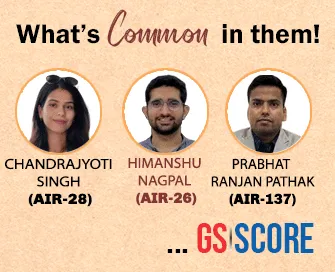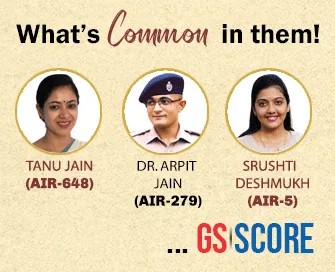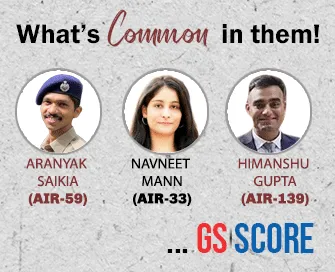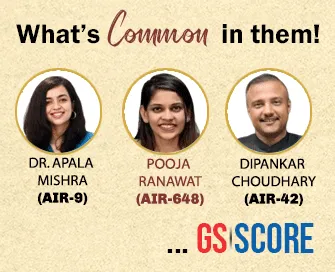

23rd July 2025 (12 Topics)
Mains Issues
Context
The Union Budget 2025–26 announced an ambitious plan to expand India's nuclear power capacity from 8.18 GW to 100 GW by 2047, with a special allocation of ?20,000 crore for Small Modular Reactors (SMRs) by 2033, aligning with the goals of Viksit Bharat by 2047 and net zero emissions by 2070.
India's Nuclear Energy Ambition: Aligning Energy Security with Climate Commitments
- India's Nuclear Journey: Historical Context:
Early Leadership and Vision:
India was the first in Asia to commission a nuclear research reactor (Apsara, 1956) and began work on power reactors at Tarapur in 1963.
Dr. Homi Bhabha had projected 8 GW nuclear power by 1980, showcasing India's early nuclear ambition.
Global Isolation and Technological Bottlenecks:
- India’s refusal to sign the NPT and the 1974 PNE test led to global exclusion from nuclear trade, slowing down reactor development and fuel procurement.
- Target deadlines were missed (10 GW by 2000) due to sanctions and lack of foreign collaboration.
Indigenisation Efforts:
- India successfully developed 220 MW Pressurised Heavy Water Reactors (PHWRs) using natural uranium.
- These designs were later scaled to 540 MW and 700 MW, with operational plants at Kakrapar (2024) and others under construction.
- Strategic Reorientation Post-2008 and Structural Hurdles
- Global Integration After NSG Waiver:
- Post-1998 nuclear tests and the 2008 NSG waiver, India resumed nuclear fuel imports and reactor deals with countries like Russia, France, and the U.S.
- Russia remains the only active external partner at Kudankulam due to pre-CLNDA agreements.
- Legislative Barriers: The CLNDA Roadblock:
- The Civil Liability for Nuclear Damage Act (2010) imposed liability on suppliers, discouraging foreign participation.
- India’s model still centers around state ownership (NPCIL) under the Atomic Energy Act, 1962, making private entry unviable without reform.
- Commercial and Regulatory Ambiguities:
- Disputes over tariff regulation between NPCIL and distribution companies (e.g., Gujarat Urja Vikas Nigam) point to unresolved jurisdictional and policy conflicts.
- The Atomic Energy Regulatory Board (AERB), not a statutory body, raises concerns over independent safety oversight—especially with private entry.
- Pathway to 2047: Aligning Growth, Climate and Energy Security
- Growth-Driven Energy Demand:
- India’s current per capita income of $2,800 must rise to $22,000 for Viksit Bharat 2047. This necessitates a five-fold increase in energy capacity, particularly from firm, non-intermittent sources.
- Nuclear energy, with 50–60 years of plant life and base-load capability, is essential given the limitations of renewables (intermittency, storage costs).
- Policy Innovation and Technological Diversification:
- The government is investing in indigenously designed Small Modular Reactors (SMRs) to replace ageing captive thermal units.
- Expansion of 700 MW PHWR units and acceleration of delayed U.S. and French projects are key elements of future strategy.
Enabling Private Participation and Financial Reform:
- Amendments to Atomic Energy Act (1962) and CLNDA (2010) are proposed to attract private and foreign investment.
- Financial reforms include redefining nuclear energy as “green,” enabling access to green financing, viability gap funding, and foreign direct investment (FDI) up to 49%.
India’s commitment to scaling nuclear capacity to 100 GW by 2047 is both visionary and pragmatic. It strategically integrates climate commitments, energy security, and industrial growth.
|
PYQ: "Access to affordable, reliable, sustainable and modern energy is the sine qua non to achieve Sustainable Development Goals (SDGs)." Comment on the progress made by India in this regard. (2018)
|


Prelims Articles
Context
The Prime Minister, Shri Narendra Modi has paid tributes to Chandra Shekhar Azad on his birth anniversary. "His role in India’s quest for freedom is deeply valued and motivates our youth to stand up for what is just, with courage and conviction", Prime Minister stated.
Chandrashekhar Azad
Biographical Context & Early Ideological Leanings
- Born: July 23, 1906, at Bhavra, Alirajpur District, Madhya Pradesh.
- Original Name: Chandra Shekhar Tiwari; adopted the title ‘Azad’ (meaning "free") during court proceedings after being arrested in 1921.
- His formative years were shaped by the Non-Cooperation Movement (1920–22) led by Mahatma Gandhi.
- The Chauri Chaura Incident (1922) and Gandhi's subsequent withdrawal of the movement disillusioned him—causing a shift from non-violence to revolutionary nationalism.
Organizational Contributions
Hindustan Republican Association (HRA)
- Joined HRA under the mentorship of Ram Prasad Bismil.
- Participated in:
- Kakori Train Robbery (1925) – strategic move to loot government funds to fuel revolutionary operations.
Hindustan Socialist Republican Association (HSRA)
- After Bismil's death and ideological realignment post-Russian Revolution, Azad and Bhagat Singh restructured HRA into HSRA (1928).
- Embraced Marxist-Socialist principles with the goal of establishing a socialist republic in India.
Key Revolutionary Acts
- Kakori Conspiracy (1925) – looting of British treasury.
- Attempted assassination of Viceroy (1926) – failed but symbolic.
- Lahore Conspiracy (1928):
- Saunders assassination to avenge the death of Lala Lajpat Rai.
- Assembly bomb-throwing case (by Bhagat Singh & B.K. Dutt, 1929) inspired by Azad's ideology.
Death & Legacy
- Date: February 27, 1931 (not January, as sometimes mistakenly cited)
- Place: Alfred Park, Allahabad (now renamed Chandrashekhar Azad Park).
- Circumstance: Chose suicide over capture – stayed true to his resolve: "Dushman ki goliyon ka hum samna karenge, Azad hi rahein hain, Azad hi rahenge."


Prelims Articles
Context
The Prime Minister, Shri Narendra Modi has paid tributes to Lokmanya Tilak on his birth anniversary. "He was a pioneering leader who played a vital role in kindling the spirit of India’s freedom movement with unwavering conviction", Prime Minister stated.
Bal Gangadhar Tilak (1856–1920)
- Birth: 23 July 1856, Ratnagiri, Maharashtra.
- Death: 1 August 1920, Mumbai.
- Known as Lokmanya Tilak – "accepted by the people as their leader".
- One of the earliest nationalist leaders to demand Swaraj and oppose British rule using mass-based political mobilization.
Educational and Cultural Contributions
- Deccan Education Society (1884): With G.G. Agarkar and others—aimed at Indian control over education.
- Fergusson College (1885): Aimed at promoting liberal and nationalistic education.
- Believed in cultural nationalism:
- Ganesh Chaturthi & Shivaji Jayanti celebrations were tools of mass mobilization.
- Reinforced a collective Hindu identity to resist colonial suppression and unify masses.
Ideology & Political Philosophy
- Swaraj as birthright: Most radical slogan of the early nationalist phase.
- Opposed moderate constitutionalism; believed in direct action and mass awakening.
- His book Gita Rahasya interpreted the Bhagavad Gita as a call to action (karma yoga).
- Faith in Hindu cultural symbols often drew criticism for being exclusivist but played a vital role in mass awakening.
Role in Indian National Movement
Early Political Involvement
- Joined INC in 1890; initially worked with Moderates.
- Lal-Bal-Pal trio: Alongside Lala Lajpat Rai and Bipin Chandra Pal, formed the extremist faction of the Congress.
Surat Split (1907)
- Turning point where Congress split into Moderates and Extremists.
- The split weakened the national movement temporarily but also marked the rise of assertive nationalism.
Home Rule Movement (1916)
- Inspired by Irish Home Rule
- Started by Tilak (April 1916) and Annie Besant (September 1916).
- Tilak’s All India Home Rule League focused on Maharashtra, Central Provinces, Karnataka, and Berar.
- Mobilized English-speaking middle class and laid the groundwork for mass national politics.
Lucknow Pact (1916)
- Historic agreement between Congress and Muslim League.
- Marked a brief phase of Hindu–Muslim unity in the freedom struggle.
- Both parties agreed to joint constitutional reforms and separate electorates.
Newspapers and Writings
- Kesari (Marathi) and Mahratta (English) – powerful platforms for anti-colonial ideas and critique of British policies.
- ‘Gita Rahasya’: Commentary on Bhagavad Gita – presented it as a text of active resistance, not passive renunciation.
- ‘Arctic Home of the Vedas’: Controversial historical interpretation proposing Aryans originated in the Arctic region.
Imprisonment and Revolutionary Sympathy:
- Arrested in 1908 for seditious writings supporting Khudiram Bose and Prafulla Chaki.
- Imprisoned in Mandalay Jail (Burma) for six years (1908–1914).
- Regarded as the "Father of Indian Unrest" by British journalist Valentine Chirol.
Death:
- Passed away on 1 August 1920, shortly before the launch of Non-Cooperation Movement (1920) by Gandhi.
- His death marked the end of the first phase of assertive nationalism in India.


Prelims Articles
Context
The Winter Fog Experiment (WiFEX), initiated in 2015 at Delhi's IGI Airport to study North India’s severe winter fog, has completed a decade of systematic observation and forecasting research.
About WiFEX
- Launched: 2015 by the Indian Institute of Tropical Meteorology (IITM), Pune.
- Nodal Ministry: Ministry of Earth Sciences (MoES).
- Collaborating Agencies: India Meteorological Department (IMD) and the National Centre for Medium Range Weather Forecasting (NCMRWF).
- Primary Objective: To understand the physical and chemical processes of fog formation and improve forecasting models for dense winter fog in the Indo-Gangetic Plain.
Significance of IGI Airport (Launch Site):
- One of the most fog-affected airports in India.
- Critical node for aviation forecasting improvement.
Technological Infrastructure and Observations:
- Instruments used: Ceilometers, micrometeorological towers, high-frequency sensors.
- Parameters monitored: Surface and boundary-layer temperature, wind, humidity, turbulence, soil heat flux, and aerosols.
- Outcome: Creation of a high-resolution (3 km) probabilistic fog prediction model with 85% accuracy for very dense fog (<200m visibility).
WiFEX-II Expansion:
- Goal: Localized, runway-specific fog forecasting extended to more airports like Jewar (Noida) and Hisar (Haryana).
- Infrastructure: Installation of dedicated fog-monitoring instruments at multiple sites.
- Application: Supports aviation safety, early warning dissemination, and transport planning during fog events.


Prelims Articles
Context
The Supreme Court has agreed to hear a Presidential Reference under Article 143, seeking clarity on the constitutional powers and timelines concerning the President’s and Governors’ assent to State Bills under Articles 200 and 201.
Article 143 – Advisory Jurisdiction of the Supreme Court:
- The President can seek the opinion of the Supreme Court on questions of law or fact of public importance.
- The Court may, after such hearing as it deems fit, report its opinion to the President, but its opinion is not binding.
Article 200 – Governor’s Assent to State Bills:
- The Governor can:
- Assent to the Bill,
- Withhold assent,
- Reserve the Bill for the consideration of the President, or\
- Return the Bill for reconsideration (if not a money bill).
- No time limit is prescribed in the Constitution for the Governor to act under Article 200.
Article 201 – President’s Assent on Reserved Bills:
- If a Bill is reserved for the President, he may either give assent or withhold assent.
- There is no constitutional timeline for this decision.
- The Presidential Reference seeks to examine whether courts can impose judicial timelines in the absence of such express provisions.
Judicial Interpretation of Constitutional Powers:
- The Reference raises key issues regarding the separation of powers, judicial overreach, and the ambit of Article 142, which allows the Supreme Court to pass any order necessary for doing complete justice.
- The Tamil Nadu Governor’s delay in assenting to re-passed Bills was declared unconstitutional by the Supreme Court (April 2024), invoking Article 142 to deem them assented.
|
PYQ: With reference to Indian polity, consider the following statements: (2022) 1. The President of India can summon a session of the Parliament at such place as he/she thinks fit. 2. The Constitution of India provides for three sessions of the Parliament in a year, but it is not mandatory to conduct all three sessions. 3. There is no minimum number of days that the Parliament is required to meet in a year. Which of the statements given above is/are correct? (a) 1 only (b) 2 and 3 only (c) 1 and 3 only (d) 1, 2 and 3 |


Prelims Articles
Context
A replica of the Ashoka Pillar was unveiled at Waskaduwa Sri Subhuthi Viharaya, Sri Lanka, to commemorate Emperor Ashoka’s seminal role in propagating Buddhism in Sri Lanka.
Unveiling of Ashoka Pillar Replica:
- Venue: Waskaduwa Sri Subhuthi Viharaya, Kalutara district, Southern Province, Sri Lanka.
India–Sri Lanka Buddhist Ties:
- India’s USD 15 million grant (announced in 2020) for Buddhist ties, includes:
- Free solar electrification for 10,000 Buddhist temples and Pirivenas.
- Promotion of Pali language—accorded Classical Language status by the Government of India in 2024.
- Re-publication of ancient Pali treatises like Namamala and Balawatharo.
- Ongoing support for sacred Buddhist relic expositions in Sri Lanka:
- Relics from Sarnath, Kapilavastu, and Devnimori (Gujarat).
- India halted the auction of sacred relics in Hong Kong, originally found in Piprahwa (1898), calling for their repatriation.
|
PYQ: With reference to the history of Indian rock-cut architecture, consider the following statements: (2012) 1. The caves at Badami are the oldest surviving rock-cut caves in India. 2. The Barabar rock-cut caves were originally made for Ajivikas by Emperor Ashoka. 3. At Ellora, caves were made for different faiths. Which of the statements given above is/are correct? (a) 1 only (b) 2 and 3 only (c) 3 only (d) 1, 2 and 3 |


Prelims Articles
Context
The Securities and Exchange Board of India (SEBI) has proposed replacing the London Bullion Market Association (LBMA) benchmark with domestic spot prices to calculate the Net Asset Value (NAV) of gold and silver Exchange-Traded Funds (ETFs).
Exchange-Traded Funds (ETFs)
- Definition: ETFs are investment funds that hold a basket of assets (stocks, bonds, commodities, etc.) and are traded on stock exchanges like individual stocks.
- Key Features:
- Real-time trading with fluctuating prices.
- Low expense ratios and brokerage fees.
- Diversified holdings reduce risk.
- Structure & Regulation:
- Most ETFs are open-ended and regulated under the Investment Company Act, 1940 (in the U.S.).
- In India, ETFs are regulated by SEBI under mutual fund norms.
- How They Work:
- Investors buy ETF shares, not the underlying assets directly.
- NAV is calculated throughout the trading day unlike mutual funds.
- Types of ETFs:
- Passive ETFs: Track indices like S&P 500.
- Active ETFs: Actively managed; higher costs.
- Bond ETFs: Invest in govt. or corporate bonds.
- Sector ETFs: Track specific industries (e.g., tech, energy).
- Commodity ETFs: Track assets like gold, oil.
- Currency ETFs: Hedge/track currency movements.
- Bitcoin & Ethereum ETFs: SEC-approved, track crypto prices.
- Inverse & Leveraged ETFs: Use derivatives to short/boost returns.
SEBI proposes shifting ETF valuation from LBMA price to domestic spot prices for better alignment with local markets and cost savings.


Prelims Articles
Context
The Government has emphasized improving digital agricultural marketing and cold storage infrastructure under initiatives like e-NAM, AIF, and MIDH to ensure remunerative prices for farmers and reduce post-harvest losses, as reinforced by recent RBI Working Papers on farmers’ share in consumer prices.
e-NAM (National Agriculture Market):
- Launched in 2016 to create a pan-India electronic trading portal integrating the physical wholesale markets (mandis).
- Aims to provide transparent price discovery, reduce information asymmetry, and enhance market access.
- Farmers Producer Organisations (FPOs) are increasingly onboarded to facilitate collective bargaining and ensure better price realisation.
Digital Market Expansion:
- FPOs are now being integrated with:
- e-NAM – National electronic mandis.
- ONDC (Open Network for Digital Commerce) – democratizing digital commerce.
- GeM (Government e-Marketplace) – allowing government procurement from farmers and FPOs.
Agriculture Infrastructure Fund (AIF):
- Central Sector Scheme launched in 2020 for post-harvest infrastructure.
- Targets: Cold storages, warehousing, grading & packaging units, especially at farm-gate level.
- As of 30 June 2025:
- 2,454 cold storage projects sanctioned.
- Sanctioned amount: ?8,258 crore.
Mission for Integrated Development of Horticulture (MIDH):
- Centrally Sponsored Scheme for holistic horticulture development.
- Support includes Pack Houses, Cold Chains, Ripening Chambers, Reefer Transport.
- Subsidy Pattern:
- 35% of project cost in general areas.
- 50% of project cost in hilly and scheduled areas.
- Implemented through State Horticulture Missions (SHMs).


Prelims Articles
Context
The Indian Council of Agricultural Research (ICAR) and the Ministry of Agriculture have highlighted key outcomes under the National Mission on Sustainable Agriculture (NMSA), NICRA, and weather advisory services to bolster climate-resilient farming.
Seed Varietal Development (2014–2024):
- ICAR has developed 2900 crop varieties, of which 2661 are tolerant to biotic and/or abiotic stresses (e.g., pests, drought, heat, and flood).
- Under NICRA, 298 climate-resilient varieties were demonstrated in 11 crops across 151 climatically vulnerable districts, benefiting 11,835 farmers.
Sub-Mission on Seeds and Planting Material (SMSP):
- Launched in 2014-15, merged with National Food Security and Nutrition Mission (NFSNM) from 2023-24.
- 270.90 crore allocated in 2024-25, with Rs. 206.86 crore disbursed.
- Notably, 141.46 crore was used under the Seed Village Programme, which promotes decentralised seed multiplication.
Village-Level Seed Banks and Demonstrations:
- Capacity building under NICRA includes seed banks and community nurseries for localised climate resilience.
- Demonstrated stress-tolerant varieties include rice, wheat, soybean, mustard, chickpea, sorghum, gram, and foxtail millet.
Weather Advisory Systems for Agriculture:
- Gramin Krishi Mausam Sewa (GKMS) scheme provides 5-day district/block-level forecasts by IMD.
- 130 Agromet Field Units generate advisories in English and regional languages.
- Dissemination through digital platforms:
- Meghdoot App (Ministry of Earth Sciences) – available in 13 regional languages.
- Mausam App, eGramSwaraj, Gram Manchitra, Meri Panchayat, and Mausamgram Portal.
Institutional Mechanisms for Farmer Outreach:
- Training and awareness under ATMA (Agricultural Technology Management Agency) on seed quality and modern practices.


Editorials
Context
Amid increasing maritime tensions, the real strategic contest between India and China is intensifying in the Himalayas, where influence over Buddhist religious institutions and spiritual succession is being weaponized for geopolitical leverage.
Spirituality and Sovereignty — The Shift in Paradigm
- Militarization of Monasteries: Once centres of meditation, monasteries in regions such as Ladakh, Tawang, and Bhutan are now positioned at the crossroads of national strategy, symbolising a fusion of sacred space with state objectives.
- Reincarnation as Political Legitimacy: The issue of recognizing the next Dalai Lama has transcended spiritual boundaries, becoming a question of sovereignty, with China asserting exclusive authority over the selection process through its 2007 ordinance.
- State-Sanctioned Faith: China has institutionalized Buddhism through bureaucratic tools — including a database of recognized lamas — while repurposing religious diplomacy to consolidate cultural influence across the Himalayan belt.
India's Reactive Posture and Emerging Strategy
- Legacy of Hosting the Dalai Lama: India's hosting of the Dalai Lama since 1959 has provided moral capital, but lacked strategic orientation until recent efforts began to leverage Buddhist diplomacy through pilgrim circuits and heritage promotion.
- Asymmetry in Buddhist Outreach: Unlike China’s centrally coordinated “Buddhist statecraft,” India’s engagement with Buddhist communities remains fragmented and lacks cohesive policy backing despite the region’s strategic importance.
- Dalai Lama Succession Dilemma: The impending succession of the 14th Dalai Lama — expected to be outside China’s territory, likely in India — could lead to dual claimants, risking a deep schism across Tibetan Buddhism and forcing regional actors to align ideologically and politically.
Borderlands, Loyalties, and Soft Power Warfare
- Religious Allegiance and National Identity: In sensitive border regions like Arunachal Pradesh, Ladakh, and Sikkim, spiritual legitimacy of high lamas can reinforce or destabilize nationalist sentiments, making monastic loyalty a strategic asset.
- China's Subtle Influence Operations: From infrastructure investments in Lumbini (Nepal) to quiet monastic diplomacy in Bhutan, Beijing is methodically building influence among Himalayan Buddhist communities to align them with its geopolitical interests.
- Proxy Conflicts within Tibetan Buddhism: Internal sectarian rifts, such as the divided Karma Kagyu leadership and the contested Dorje Shugden practice, are being exploited by both powers — turning religious disputes into geopolitical footholds.
Practice Question:
"In the context of Sino-Indian rivalry, discuss how Buddhism is evolving from a cultural-religious tradition into a strategic tool of statecraft in the Himalayas. Examine its implications for India’s borderland diplomacy and regional security architecture." (250 words)


Editorials
Context
Prime Minister Narendra Modi's visit to the UK for the formal signing of the India–UK Free Trade Agreement (FTA) marks a pivotal moment in bilateral ties, amid rising global uncertainty driven by China’s assertiveness and a volatile US foreign policy.
Historical Backdrop and Strategic Lag
- Post-Colonial Hangover: Despite the shared colonial past and historical linkages, both Delhi and London underestimated the mutual strategic potential, constrained by post-imperial British sentiment and India’s post-colonial caution.
- Early Missed Opportunities: Initial enthusiasm during the 1990s—especially under Conservative Prime Minister John Major—did not materialize into sustained strategic cooperation due to policy incoherence and global distractions, particularly under Trump’s presidency.
- Evolving Global Context: The decline of American strategic commitment, rising tensions with China, and geopolitical flux post-Brexit now place India and the UK at a critical juncture to realign interests in trade, security, and technology.
Strategic Complementarities and Economic Interests
- India as a Strategic Anchor: Britain views India as a key player to anchor its “Global Britain” strategy in the Indo-Pacific, balancing China while ensuring economic diversification post-EU exit.
- Technology and Innovation Synergies: Areas such as defence manufacturing, digital innovation, education, and clean energy offer natural grounds for synergy between UK’s capital and research ecosystem and India’s expanding industrial capacity.
- FTA as a Symbolic Inflection Point: The signing of the India–UK FTA is not just about trade but a strategic pivot for both countries, symbolizing deeper cooperation amidst a shifting global order.
Political Dynamics and Strategic Forecast
- Internal Political Alignment: Bipartisan support in India and a more pragmatic stance from the British Labour Party under Keir Starmer (especially in contrast to earlier anti-India views) have created political conditions conducive to long-term bilateralism.
- Security and Soft Power Leverage: India’s strategic positioning in the Indian Ocean, large skilled diaspora in the UK, and Britain’s global financial and educational institutions are critical levers for mutual diplomatic and cultural engagement.
- Multipolar World Realignment: The emerging multipolar order—with declining US primacy, an aggressive China, and the Russia–West divide—offers both India and the UK an opportunity to position themselves as credible, democratic middle powers.
Practice Question:
“Discuss how the India–UK Free Trade Agreement marks not merely an economic pact but a strategic realignment in the context of emerging multipolarity and post-Brexit recalibration of British foreign policy.” (250 words)


Editorials
Context
The Union Ministry of Environment has revised its notification on SO? emission norms by easing the mandatory installation of Flue Gas Desulphurisation (FGD) systems across thermal power plants, following expert recommendations and scientific assessments of India’s low-sulphur coal profile.
Background of the Original Mandate and Challenges
- 2015 Notification and Blanket FGD Mandate: In 2015, the Ministry mandated FGD systems for all 600+ thermal power plants to control SO? emissions, without distinguishing between low- and high-emission regions or the sulphur content of coal used.
- High Cost and Technical Burden: Power sector experts flagged serious concerns about the capital expenditure, impact on electricity tariffs (estimated hike of ?0.25–?0.30 per kWh), and the questionable technical necessity for low-sulphur Indian coal plants.
- Need for Scientific Evaluation: Concerns prompted studies by the Ministry of Power, IIT Delhi, and NITI Aayog, concluding that FGD is not uniformly required and that emission regulation must be based on contextual parameters, not a one-size-fits-all mandate.
Scientific Findings and Regional Variation
- IIT Delhi & Ministry of Power Study: The joint study found significant regional variation in SO? levels, showing that many Indian plants do not require FGD installation due to low ambient concentrations and naturally low sulphur content in Indian coal.
- NITI Aayog & NEERI’s Recommendations: NEERI suggested zoning India’s coal-based power plants into three categories based on emission intensity and regional population vulnerability—recommending targeted rather than blanket FGD implementation.
- Latitudinal and Meteorological Considerations: India's geographical location, lower emission dispersion due to tropical wind patterns, and already low background SO? levels make uniform FGD requirements both economically inefficient and environmentally redundant.
Policy Revision and Broader Implications
- Revised Notification and Rationalised Standards: The government’s revised policy allows flexibility by categorising power plants and exempting low-emission units, while maintaining strict controls for plants in high-density and ecologically sensitive regions.
- Impact on Energy Security and Affordability: By easing FGD obligations for many plants, the revised norms are expected to contain electricity generation costs, enhance grid reliability, and avoid power shortages amidst rising energy demand.
- Climate and Emissions Trade-Off: While FGDs reduce SO?, they increase CO? footprint and water consumption; the revision thus also reflects an attempt to balance climate objectives with the pragmatic realities of India's power and resource needs.
Practice Question:
“India’s decision to revise SO? emission norms and rationalise FGD requirements reflects the complex trade-off between environmental obligations and energy security. Critically examine this policy shift in light of India's developmental priorities and international climate commitments.” (250 words)



